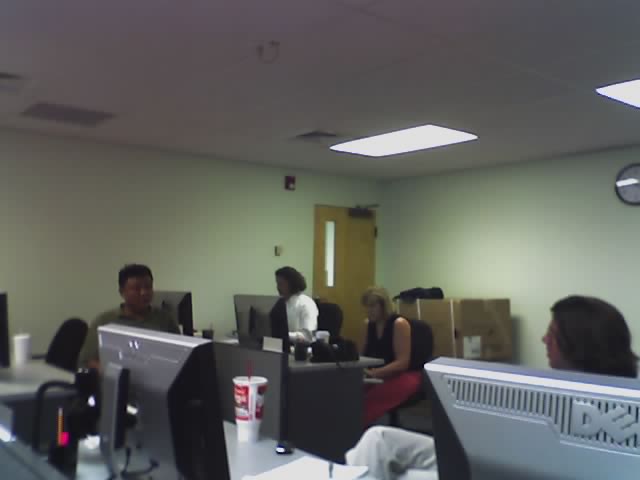Coastal and Estuarine Science Cyberinfrastructure Training and Deployment
This NSF-sponsored project educates and trains coastal and estuarine science and engineering communities on the use and development of applications in simulation and modelling which can benefit from the availability of high-performance and high-throughput computing cyberinfrastructures (CI).
As a cornerstone of this effort, we leverage the Grid Appliance to allow users who are not familiar with tools or do not have access to high-throughput computing infrastructures can run powerful CI software and access a realistic Grid computing CI from their own desktops, within minutes.
The Grid appliance is being used to provide hands-on education and training to coastal and estuarine scientists using an interactive simulation application CH3D-GTM, a hydrodynamics model (CH3D) applied to the Guana Tolomato Matanzas estuary. Users in other disciplines which have many independent simulations they need to perform (e.g. Monte Carlo analysis, parameter sweeps) can benefit from the CI-TEAM appliance.
You can try the CI-TEAM Grid appliance for yourself – just download the CI-TEAM appliance zip archive and follow our quick start guide to get started. Also, please give us feedback through our anonymous online survey. Check our up to date statistics to visualize where our Grid appliances are running and our virtual networking infrastructure deployed over the PlanetLab testbed with interactive Google maps.
Screenshot of the CI-TEAM appliance running on VMware:

Educational Activities:
We have conducted a variety of presentations and hands-on training sessions using our Grid appliance in 2007, which are highlighted below:
Reno, NV: Figueiredo shared a session in the SC07 Education program with fellow CI-TEAM awardee Henry Neeman. The Grid appliance was used for hands-on Condor tutorials – attendees installed and ran the appliance on the laptops provided for the SC07 education session. The feedback from this session was very positive, and helped fine-tune the content of the tutorial – we had a very limited time frame (about 45 minutes!), still, most of the attendees were able to submit demo jobs to an appliance pool. Check the SC07 web site for more information on what happened during this program.
Figueiredo also conducted a demo session at the SURAGrid/IBM booth in the morning of Nov. 13. Slides for these two presentations are available here: education session slides; SURAGrid demo.
Palatka, FL: PIs Figueiredo and Davis, and graduate student David Wolinsky conducted a hands-on CI education session at the St. John’s River water management district, attended by district engineers and IT personnel. We brought CDs with the appliance software, and the attendees installed the software themselves in the classroom PC desktops. The training session took a total of three hours, with a combination of a short presentation and hands-on experiments with Condor tutorial applications and the CH3D-GTM model. The sessions ran smoothly; all attendees were able to successfully install and use the software. Since then, engineers at the district started implementing a pilot program which is based on the use of VM appliances customized with their software for the execution of batch simulation jobs within their own domain.

Madison, WI: PI Figueiredo gave an invited seminar at Condor Week 2007 highlighting the Grid appliance technology used in this project.
Madison, WI: As part of a related project (nanoHUB), Figueiredo also gave a short hands-on session at the TeraGrid conference. Attendees were able to run appliances and demonstration job submissions from their own laptops, from images distributed in CDs during the tutorial presentation.
Washington, DC: PI Figueiredo participated in a panel at the CI-TEAM workshop organized by NSF. The CI-TEAM appliance was demoed interactively from a laptop during the poster session at the workshop.
Switzerland: The Grid appliance was used as an aid in teaching cluster/grid computing concepts in a system services class at the University of Applied Sciences Northwestern Switzerland. Interestingly, the instructor of this class came across the appliance through the VMware appliance challenge (see below).
VMware Ultimate Virtual Appliance Challenge:
Virtual appliances are changing the way software is packages and distributed. In 2006, leading virtual machine vendor VMware posed a challenge to appliance designers world-wide. Among 169 entries, the Grid appliance used as a basis for this CI-TEAM project was one of those to receive an honourable mention
Publications:
Check the Publications link in the left side of this portal to download publications from this project.
Partners:
ACIS Lab, Electrical and Computer Engineering, UF (Renato Figueiredo, Jose Fortes)
Coastal and Oceanographic Engineering, UF (Peter Sheng, Justin Davis)
Guana Tolomato Matanzas NERR (Rick Gleeson)
St. John’s River Water Management District (Peter Sucsy, Tim Cera)
Sponsor:
This work is sponsored by the National Science Foundation Office of Cyberinfrastructure, CI-TEAM program under award SCI-0537455

